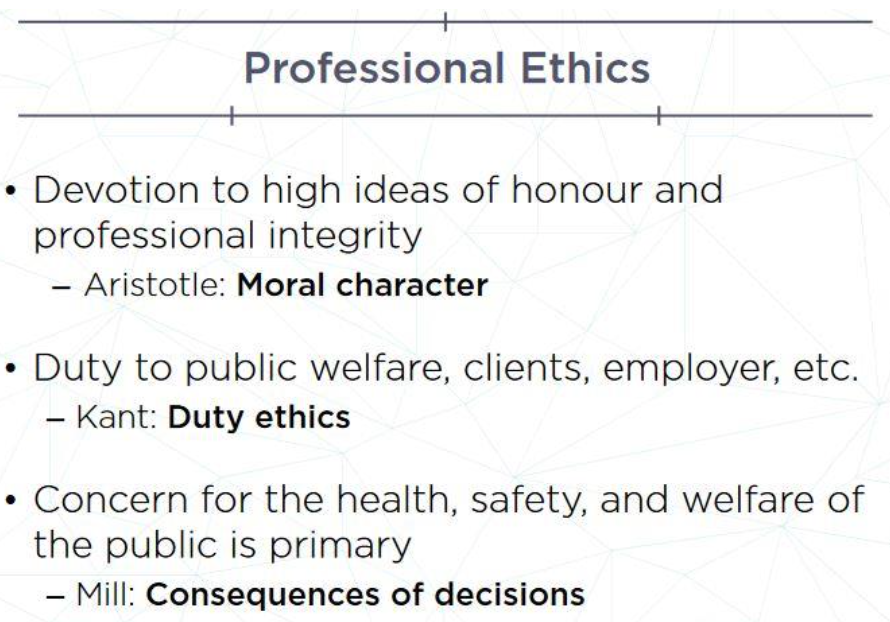PD10: Professional Responsibility in Computing
The only PD I’ve found useful so far. So I’ve taken some notes on it.
Content
Unit 1: Professional Responsibility in Computing Unit 2: Intellectual Property for Creators
Unit 3: Intellectual Property of Users
Unit 4: Licenses
Unit 5: Perfect Software Despite best efforts and best practices, developing error-free software is not currently possible.
Why is that the case? Because it isn’t feasible to test all possible inputs, it is not possible to prove that a program is error-free by testing it. All we can do is use testing as a means of finding errors – without ever knowing how many errors are left in the program.

[!Perfect Software does not exist…] On Perfect Software: Perfect Software is just an idea. As soon as you release a product, you immediately need to start working on the next version of that product or the next service update or the next hot fix because someone somewhere is going to be asking for that next version. As I can observe at Blackberry QNX
Unit 6: Software Warranties and Liabilities When software inflicts damages, to what extent are the software developers liable to compensate users?
- Product Liability - tort law
- Tortious vs. Contractual Liability - liability
- Warranty

Unit 7: Legal compliance You will explore the legal compliance and responsibilities about software products being used illegally. You will explore legal and ethical arguments on the extent of a software provider’s responsibility.
Unit 9: Ethical Behaviour of computing professionals

Note how these three theories focus on different aspects of ethical decision-making. Aristotelian ethics emphasizes the moral character and disposition of the person who is making decisions. Kantian ethics looks at concrete principles and rules that can be used to provide guidance when making or defending ethical decisions. Millsian ethics says that we must consider also the consequences of our actions when making decisions.

News
Copyright:
-
https://www.theverge.com/2017/11/6/16614038/apple-samsung-slide-to-unlock-supreme-court-120-million
-
https://www.thewrap.com/netflix-stranger-things-copyright-infringement-lawsuit/ Patents
-
https://www.cnbc.com/2018/03/06/blackberry-suing-facebook-for-patent-infringement.html
-
Athletes Don’t Own Their Tattoos. That’s a Problem for Video Game Developers
-
Google beats Oracle in biggest programming copyright Supreme Court case ever